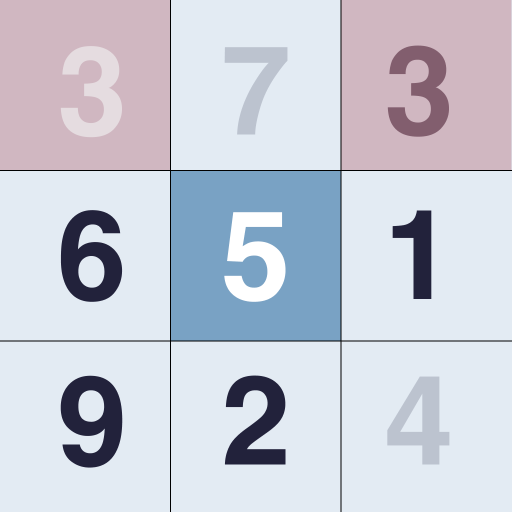
The Mathematics of Sudoku: Unraveling the Logic Behind the Puzzle
Introduction
Sudoku, the beloved number puzzle, is not just a mind-challenging game but also a fascinating subject of mathematical exploration. In this article, we will delve into the captivating world of the mathematics of Sudoku, uncovering the logic, patterns, and combinatorial principles that make this puzzle a mathematical gem.
1. The Structure of Sudoku: Sets, Permutations, and Combinations
Sudoku puzzles have a structured grid of cells organized into rows, columns, and regions. Sets, permutations, and combinations are mathematical concepts that relate to the structure of Sudoku puzzles. Sets represent collections of distinct elements, while permutations and combinations deal with arranging and selecting elements. Understanding these concepts helps us recognize patterns and constraints within Sudoku puzzles. Learn more about sets, permutations, and combinations here, here, and here.
2. Latin Squares and Group Theory: Unlocking the Symmetry
Sudoku is a type of Latin square, a mathematical concept connected to group theory. Latin squares are matrices with unique symbols in each row and column. Group theory explores the properties of symmetrical structures. By understanding the connections between Sudoku and Latin squares, and delving into group theory, we gain insights into the symmetrical patterns and constraints that make Sudoku puzzles intriguing. Learn more about group theory here and Latin squares here.
3. Complexity and Computational Sudoku: A Mathematical Perspective
The complexity of Sudoku puzzles raises interesting questions about their solvability and computational aspects. Computational complexity theory is a branch of computer science that explores the resources needed to solve computational problems. Sudoku puzzles have been classified into different complexity levels based on their difficulty. Understanding computational complexity theory can provide insights into puzzle hardness and the existence of unique solutions. Learn more about computational complexity theory here and the solvability of Sudoku puzzles here.
4. Probability and Sudoku Solving Techniques: Logical Deductions at Play
Probability theory and logical deductions play a crucial role in solving Sudoku puzzles. The probabilistic method, a technique used in mathematics and computer science, involves making educated guesses based on the likelihood of certain events. In Sudoku, logical deductions help eliminate possibilities and narrow down the solution. Advanced techniques like X-wing, swordfish, and coloring leverage mathematical patterns and logical deductions to solve even the most challenging Sudoku puzzles. Explore these techniques and enhance your puzzle-solving skills here. You can also learn more about the probabilistic method here.
5. Sudoku Variants and Mathematical Explorations: From Classic to Creative
Sudoku has inspired numerous exciting variants that showcase the versatility of its underlying mathematics. Killer Sudoku introduces additional sum constraints to the puzzle, while Samurai Sudoku combines multiple grids into a larger puzzle. These variants provide unique challenges and require different solving strategies. Exploring the mathematical foundations of these variants adds an extra layer of depth and enjoyment to the puzzle-solving experience. Discover Killer Sudoku here, Samurai Sudoku here, and learn about Hyper Sudoku here.
Conclusion
The mathematics of Sudoku reveals a world of logical reasoning, problem-solving, and mathematical exploration. Gain a deeper appreciation for the elegance and complexity of Sudoku by understanding its mathematical foundations. Whether you enjoy Sudoku as a leisure activity or dive into its mathematical intricacies, it remains a captivating fusion of mathematics and logic. Embrace the numbers, patterns, and symmetries of Sudoku, and let mathematics guide you through its endless puzzles.
Remember to have fun while exploring the mathematical aspects of Sudoku, and keep sharpening your problem-solving skills through this fascinating puzzle game!
References:
- Sets, Combinations, and Permutations: Math is Fun - Sets, Math is Fun - Combinations and Permutations, Math is Fun - Difference between Combinations and Permutations
- Group Theory: Math is Fun - Group Theory
- Latin Squares: Math is Fun - Latin Square
- Computational Complexity Theory: Wikipedia - Computational Complexity Theory
- Solvability of Sudoku Puzzles: ScienceDirect
- Probabilistic Method: Wikipedia - Probabilistic Method
- Advanced Sudoku Techniques: Sudoku of the Day
- Sudoku Variants: Sudoku Wiki - Killer Sudoku, Krazydad - Samurai Sudoku, Wikipedia - Hyper Sudoku

Previous: Sudoku Solving Algorithms: Backtracking, Dancing Links, and More | Next: Sudoku for kids benefits: pros and cons
